Long veiled in mystery and tradition, Saudi Arabia is swiftly transforming into a beacon for global adventurers seeking the road less traveled. Far beyond the oil wealth and the shimmering mirages of the desert, lies a rich tapestry of cultural heritage, majestic landscapes, and groundbreaking developments that invite the curious traveler to explore. This kingdom, often known for its conservative visage, now unfolds its treasures, as tourism in Saudi Arabia begins to flourish like never before. As international visitors start to visit Saudi, they unravel experiences that challenge preconceived notions, beckoning them to witness a land where ancient history and futuristic vision coalesce.
Embracing the winds of change, Saudi Arabia tourism is not just an escapade into an exotic realm, but a testament to the country’s relentless ambition and welcoming spirit. Through travel and tourism, the soul of Arabia beckons, promising wonders that are yet to imprint on the hearts of worldly sojourners. Now is the time to revisit the map, pin the Kingdom, and pencil in your next travel narrative amidst its unfolding stories.
Key Takeaways
- Saudi Arabia’s untapped potential is blooming, presenting a novel and exhilarating travel destination.
- The Kingdom is amalgamating its rich cultural heritage with modern leisure and tourism offerings.
- Tourism in Saudi Arabia is a burgeoning sector, thanks to strategic initiatives like Vision 2030.
- Travel and tourism provide a unique perspective into a land of diversity, breaking stereotypes and opening minds.
- Visit Saudi to step into a narrative that weaves ancient legacies with contemporary aspirations.
- Saudi Arabia invites wanderlust hearts to explore its hidden jewels, from desert expanses to cosmopolitan cities.
Embracing Saudi Arabia’s Vision 2030 for a Transformed Tourism Landscape
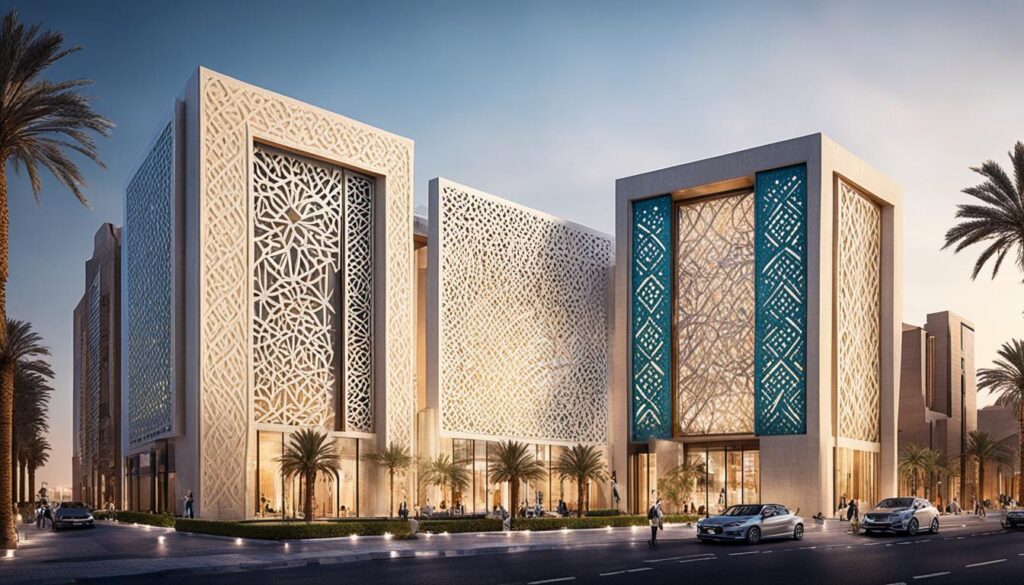
At the heart of the Kingdom’s diversification drive lies Saudi Arabia’s Vision 2030, an ambitious blueprint that seeks to recalibrate the country’s economic focus away from hydrocarbons and towards a broad spectrum of industries, with the tourism sector being a central pillar. This transformative journey is not merely an economic shift; it is an endeavor to welcome the world into the rich culture and heritage that Saudi Arabia holds.
The development of the tourism sector under Vision 2030 is not only about enhancing the volume of visitors to the kingdom but also about enriching the quality and variety of experiences that Saudi Arabia offers. It incorporates the establishment of new tourist destinations, the improvement of infrastructure, and the relaxation of visa regulations to facilitate easier access for international visitors.
Saudi’s Vision 2030 is an engine of growth for the tourism industry; it isn’t simply leading the pack in the Middle East—it’s a beacon of transformation on a global scale. – Unnamed tourism strategy analyst.
A core element of the tourism strategy is the giga-projects like NEOM, Qiddiya, and the Red Sea Project—each representing innovation in hospitality, entertainment, and eco-tourism. These initiatives serve as catalysts for employment and are expected to have a significant impact on the Kingdom’s GDP.
- NEOM: Envisioning a future-driven mega-city that integrates the latest in technology, sustainable living, and global business.
- Qiddiya: A colossal entertainment district, set to be the capital of fun, arts, and sports in the region.
- The Red Sea Project: A luxury tourism destination that promises to set new standards in sustainable development and conservation.
The implications of these ambitious projects for the global tourism landscape are noteworthy. With immense investment funneled into the development of the tourism sector, Saudi Arabia prepares to redefine travel norms and emerge as a world leader in tourism innovation and cultural exchange.
Under the aegis of Saudi’s Vision 2030, what unfolds is a narrative of transformation, an unfolding saga that beckons travelers to be part of a new chapter in the Kingdom’s storied history — a tale of hospitality who’s zenith is yet to come.
Saudi Arabia’s Historical Riches: Unesco World Heritage Sites
The Kingdom of Saudi Arabia is not only a land of innovation and futuristic visions but also a treasure trove of ancient history, preserved for centuries and celebrated by UNESCO. From the enigmatic ruins of Nabatean civilizations to the bustling historic ports that welcomed pilgrims, these World Heritage sites are testament to a storied past that continues to beckon history enthusiasts and cultural connoisseurs from around the globe.
Al-Ula: The Nabatean Archaeological Wonder
Nestled within the stunning desert landscape, Al-Ula is an enchanting archaeological site capturing the grandeur of the Nabateans. The ancient city of Hegra, with its monumental tombs cut from sandstone mountains, narrates a history of innovation and splendor. Here, one can traverse the same paths that spice traders once journeyed, uncovering the mystique of a bygone era amid the silent, awe-inspiring structures.
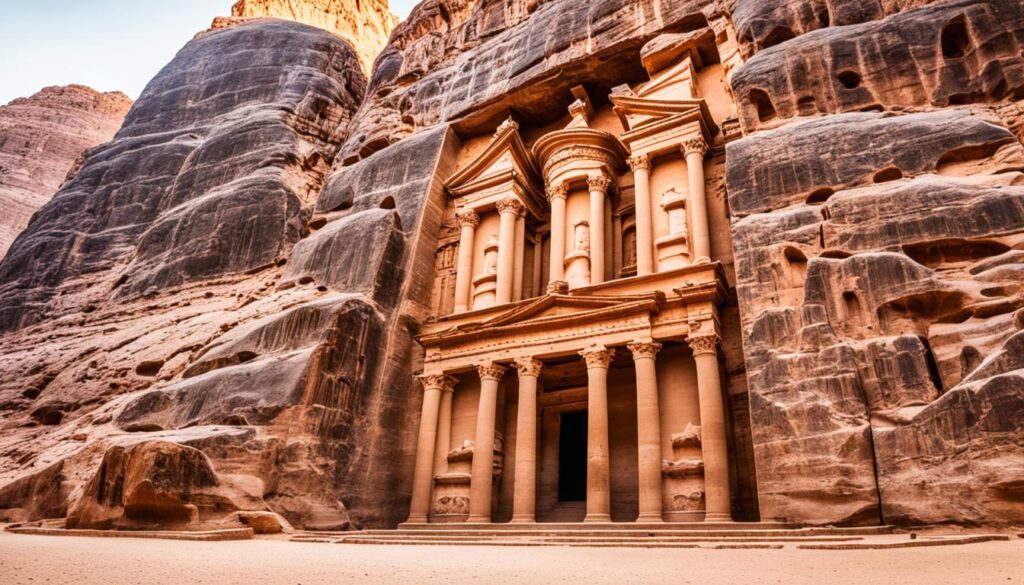
At-Turaif District: A Glimpse into the Kingdom’s Roots
In Diriyah lies the birthplace of the Saudi state: the At-Turaif district. This heritage site is not just a collection of palaces, mosques, and public buildings; it is the cornerstone of Saudi Arabian heritage, reflecting the sociopolitical beginnings of the nation. Amid the adobe-brick architecture, visitors gain insight into a pivotal chapter of the region’s history.
Al-Ahsa Oasis: A Green Sanctuary in the Desert
The Al-Ahsa Oasis is a verdant miracle in the heart of the arid desert. Home to over two million palm trees, this green sanctuary is a living representation of the adaptability and ingenuity of its inhabitants. It’s a lush landscape that serves as a respite for flora, fauna, and humans alike, reminding us of the resourcefulness carved into the Saudi Arabian history.
The Historic Jeddah: The Gateway to Mecca
As the traditional convergence point for pilgrims embarking upon their journey to Mecca, Historic Jeddah is an urban symbol of diversity and spirituality. Wandering through its ancient corridors, one finds oneself amidst a tapestry of trade, culture, and religions that have coexisted and flourished along the Red Sea for centuries, making it a unique heritage site that paints the social fabric of the region.
Each of these UNESCO World Heritage sites plays a crucial role in not only preserving the intricate tapestry of Saudi Arabian heritage but also showcasing the harmonious blend of its history with the aspirations of a new era, inviting the world to witness its stories of resilience and cultural grandeur.
Discovery of the Red Sea’s Untouched Beauty: Tourism and Conservation
Immerse yourself in the majestic Red Sea, a miracle of nature where the aquatic world bustles beneath its crystalline surface. As you gaze upon its serene expanse, discover a kingdom that has pledged to preserve this untouched beauty while welcoming the world through sustainable tourism efforts.
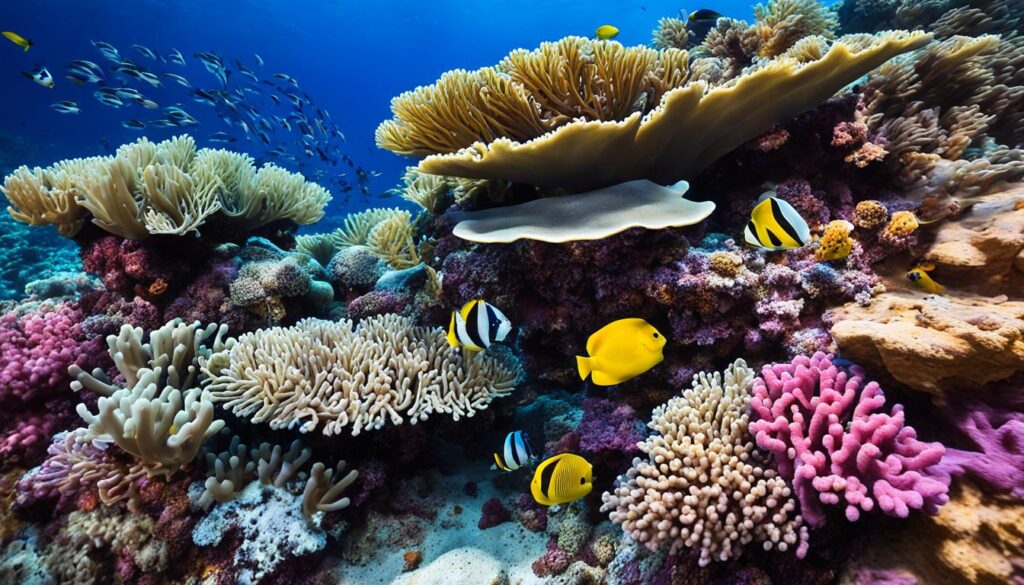
At the heart of this commitment lies the Red Sea Project, a beacon of environmental conservation and luxurious escape. A project that receives unwavering support from the tourism development fund, designed to fuse economic growth with ecological balance, carving out a new paradigm for luxury travel and environmental stewardship.
Here’s how Saudi Arabia converges the drive for tourism with indispensable conservation practices:
- Utilizing a tourism development fund to underwrite projects that meet stringent environmental conservation standards.
- Curating a portfolio of water sports and recreational activities that harmonize with the indigenous ecosystem.
- Implementing advanced marine biology research to guide the sustainable footprint of each initiative within the Red Sea project.
- Pioneering green technologies to safeguard the purity and biodiversity of the Red Sea’s marine life.
This harmonious approach ensures that the dazzling coral reefs, thriving marine fauna, and ancient coastal mangroves continue to flourish. The Red Sea‘s allure is not simply in its aesthetic splendor, but in the profound respect and commitment demonstrated towards its preservation. As the tide of tourism rises, it carries with it a steadfast promise for environmental conservation, proving that responsible enjoyment of our planet’s wonders is not only possible but can set a new standard for destinations worldwide.
In the pursuit of capturing the essence of the Red Sea’s untouched beauty, tourism has found a companion in conservation, ensuring that this mesmerizing seascape remains an enchanting sanctuary for generations to come.
Saudi Arabia’s Evolving Cityscapes: Riyadh and Jeddah’s Hospitality Scene
In the heart of the Arabian Peninsula, the vibrant hospitality scenes of Saudi Arabia’s two major cities, Riyadh and Jeddah, are evolving into global icons of luxury and culture. Marrying tradition with innovation, the evolving cityscapes of these regions are defining new benchmarks in tourism destinations. As the sun pierces through towering skyscrapers, a new era of experiences beckons – a testament to the country’s rich heritage and its forward-thinking vision.
Riyadh Season: Entertainment and Culture Fusion
Once the Riyadh season rolls into the city, a kaleidoscope of entertainment and cultural activities envelops the landscape. This eclectic festival is not just an event; it’s a cultural phenomenon, artistically blending music, sports, and fine dining into an immersive spectacle. The Riyadh Season has become a cornerstone of the region’s hospitality, offering a glimpse into the heart and soul of local traditions while amplifying the city’s modernity.
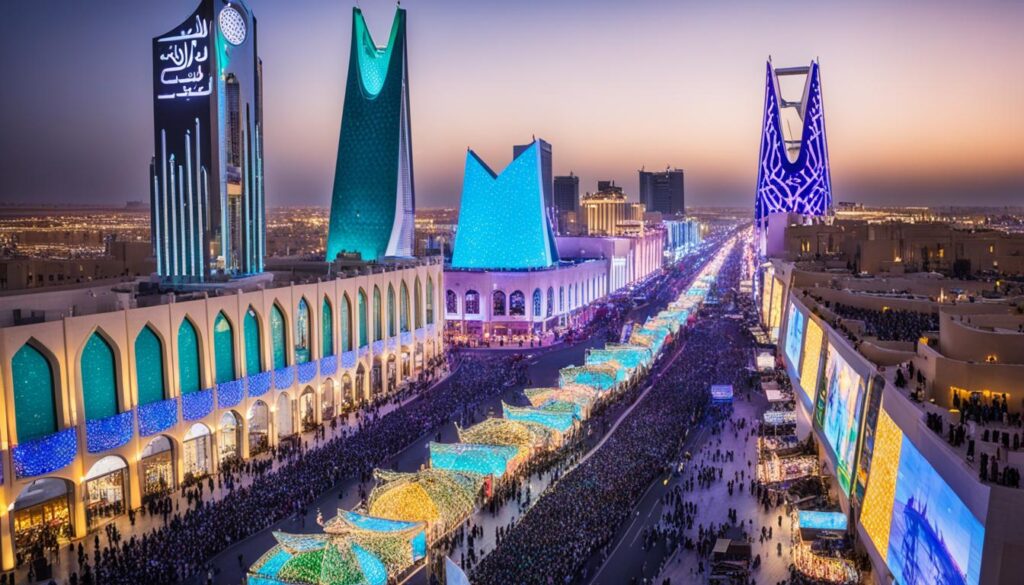
Jeddah: A Blend of Historic and Modern Attractions
The coastal city of Jeddah simultaneously whispers tales of ancient traders and resounds with the buzz of contemporary life. Its historic district, Al-Balad, laden with timeless architecture and bustling souks, stands in striking contrast to the sleek, urban developments along the Corniche. Jeddah’s hospitality sector encapsulates this duality, catering to both heritage enthusiasts and seekers of modern luxury.
Neom and Amaala: Visionary Projects of the Future
On the horizon of Saudi ambition lie Neom and Amaala – twin beacons of tomorrow’s tourism and hospitality. These projects are not just about grandeur; they represent the inception of future living. With Neom’s aim to be a hub for innovation and Amaala’s dedication to ultra-luxury, these developments are set to transform the Kingdom into an extravagant sanctuary for the discerning global traveler.
The story of Saudi Arabia’s hospitality scene continues to unfold, narrating chapters of progress and promise, each one inviting the world to witness its grand evolution. From the historic alleys of Jeddah to the future cityscapes of Neom and Amaala, the Kingdom is on a quest to craft a legacy that will resonate with travelers for generations.
Tourism in Saudi Arabia: A Dive into the Kingdom’s Expanding Amenities
The tourism industry’s expansion in Saudi Arabia continues to reach new horizons, fostering a realm of impressive cultural attractions and highly anticipated events designed to elevate the country as a top-notch tourist destination. As the Kingdom casts a vision for its future, each region unfolds its unique offerings, blending historic profundity with modern sophistication. The recent initiatives reveal a commitment to enhancing amenities that entice global travelers while honoring the country’s storied past and flourishing urban landscapes.
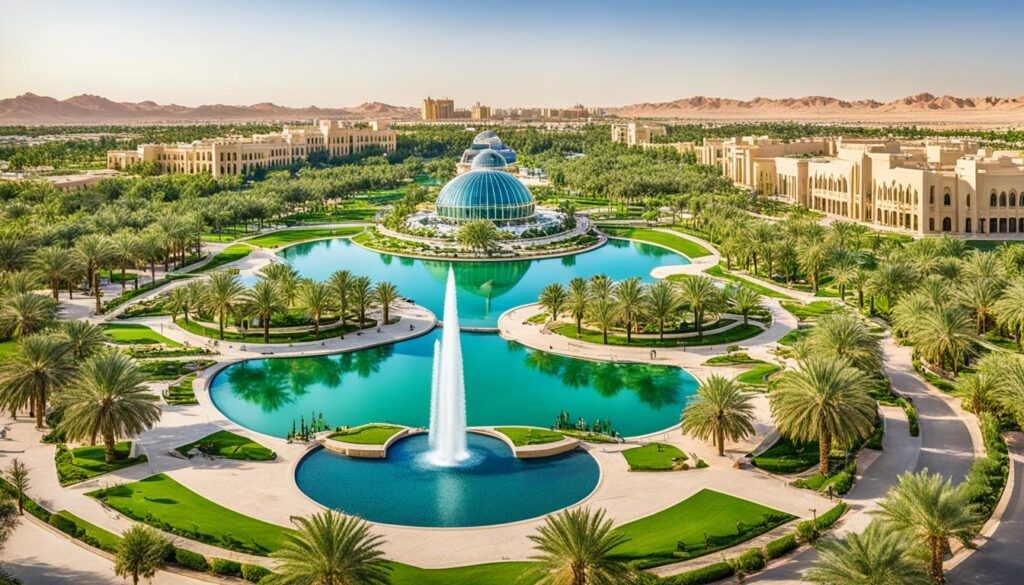
Red Sea International Film Festival: Celebrating Global Culture
Capturing the essence of global storytelling, the Red Sea International Film Festival has emerged as a beacon of international cinema in the Middle East. This illustrious event bridges cultures, showcasing a tapestry of filmmaking that both entertains and enlightens audiences. By creating a vibrant cultural node, it stands testament to Saudi Arabia’s evolving stage for artistic exchange.
Diriyah: The Capital of the First Saudi State
The historical city of Diriyah is a testament to the Kingdom’s deep roots. A cultural landmark, Diriyah is fast transforming into a treasure trove for heritage tourism. As the capital of the first Saudi state, its ancient walls and pathways narrate stories of power, politics, and tradition, inviting travelers to step back in time and experience the country’s regal beginnings.
The Eastern Province’s Coastal Escapes
Saudi Arabia’s Eastern Province unveils a picturesque coastline that effortlessly lures travelers seeking tranquility and adventure by the sea. Encompassing sublime beaches and idyllic towns, the region offers a serene escape from the dynamism of urban life. Here, hospitality intertwines with natural beauty, creating coastal retreats that are both enchanting and invigorating for the senses.
King Salman Park and Green Riyadh: Urban Developments
At the heart of urban revitalization efforts are the groundbreaking projects of King Salman Park and Green Riyadh. These endeavors aim to redefine city life, providing sprawling green spaces that prioritize sustainability and recreation. As part of Saudi Arabia’s commitment to fostering welcoming urban environments, these initiatives craft an image of a metropolis harmoniously balanced with nature’s allure.
Cultural Festivals and Events: Engaging with the Rich Heritage of Saudi’s
The rhythm of traditional music and the swirl of vibrant colors are not only a feast for the senses but a deep dive into the heart of Saudi Arabian culture. For those wishing to connect with the country’s soul, the Saudi Seasons is a gateway to a world where cultural festivals are a testament to the Kingdom’s rich heritage. These events stand as pivotal tourist attractions, drawing visitors into the pulsating life of Saudi’s historic celebrations.

As the seasons change, so do the celebrations in every corner of the Kingdom. From the artistry of falconry to the aromatic coffee traditions, every festival is a storybook page of Saudi’s heritage coming alive. This immersive experience is not just about watching; it is about living and breathing the authentic essence of the country. Whether it’s through the taste of local cuisines or the sounds of folkloric performances, each festival captures the spirit of Saudi’s past and presents.
“In every corner of the Kingdom, the Saudi Seasons unfold stories of our ancestors, inviting the world to witness the diversity and richness of our cultural tapestry.”
Below are some of the cultural touchstones that make Saudi’s festivals an unforgettable sojourn:
- **Heritage Villages** – As the past melds with the present, these villages offer a window into the lives of Saudi ancestors, with traditional crafts and age-old customs at the forefront.
- **Food Festivals** – A delectable journey that offers a slice of local life as one savors regional dishes that are as flavorful as they are steeped in history.
- **Art & Literature Celebrations** – Get swept into the current of Saudi creativity, where contemporary art and literature celebrate the evolving identities of Saudi creatives.
- **Folklore Shows & Dance Performances** – Experience the heritage come alive in movement and music, offering an exhilarating glance at Saudi’s cultural diversity.
These festivals are not just lavish spectacles; they are interactive hubs where one can engage with artisans, listen to local tales, and understand the intricate patterns of life that have been woven over millennia. The Saudi’s heritage is a palpable force during these celebrations, offering visitors not just a trip, but a transformation.
The festivals serve as ambassadors of peace and cultural exchange, solidifying the Kingdom’s place as a meeting point for global travelers seeking to broaden their horizons. Saudi Arabian culture is not a static exhibit but a living, evolving narrative, and these festivals are its resounding voice.
The Impact of Hajj and Umrah on Saudi Arabia’s Tourism Ecosystem
Hajj and Umrah represent the pinnacle of religious tourism, drawing millions to the sacred cities of Mecca and Medina. These religious pilgrimages not only reflect deep spiritual commitments but also significantly bolster Saudi Arabia’s tourism ecosystem. Providing an intricate network of services, the Kingdom has strategically enhanced its hospitality sector to accommodate the unique needs of pilgrims from around the globe.
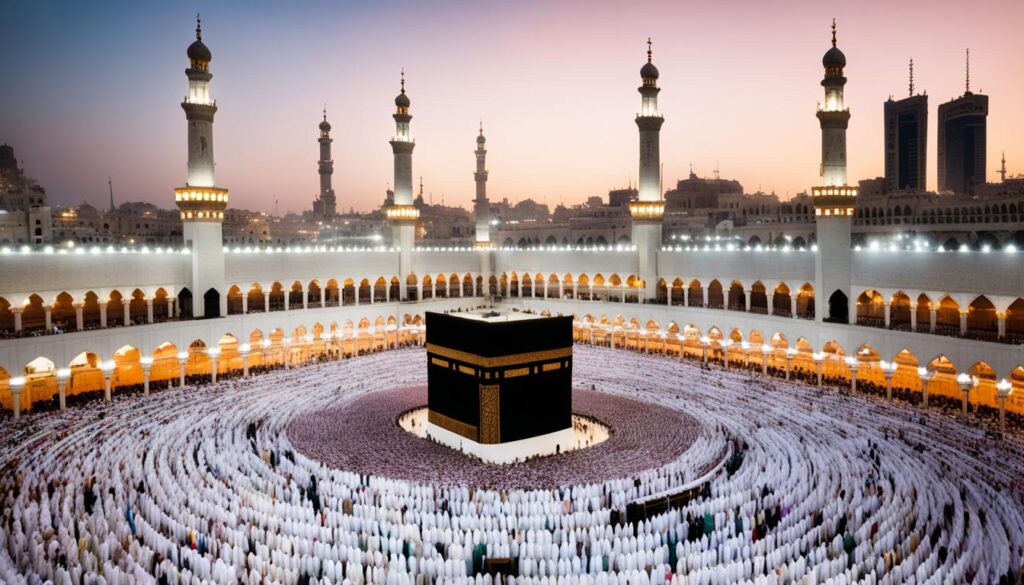
Every year, the influx of the faithful transforms the religious tourism landscape. In response, Saudi Arabia has enacted extensive measures to facilitate these profound journeys. From expanding accommodation and transportation services to improving on-site amenities, the government’s dedication is evident. Furthermore, the contribution of Hajj and Umrah pilgrimages transcends immediate economic impact, fostering a sustainable and richly diverse tourism ecosystem that resonates year-round.
- Evolution of religious tourism infrastructure
- Enhancements in pilgrim experience
- Sustainable stewardship of sacred sites
As the Kingdom continues to welcome worshippers, the bond between faith and travel deepens, echoing the profound role of Hajj and Umrah in the country’s cultural and economic narrative.
Opening Doors to the World: Saudi’s Tourist Visa and Hospitality Offerings
In an era where travel is synonymous with culture and experience, the Kingdom of Saudi Arabia has taken significant strides in revamping its visa policies to welcome the world to its land of heritage and modernity. The introduction of the tourist visa and e-visa systems manifests Saudi Arabia’s commitment to making travel to the country seamless. This initiative is in harmony with the Saudi Tourism Authority’s goal to showcase the nation’s diverse attractions, from bustling cities to tranquil deserts.
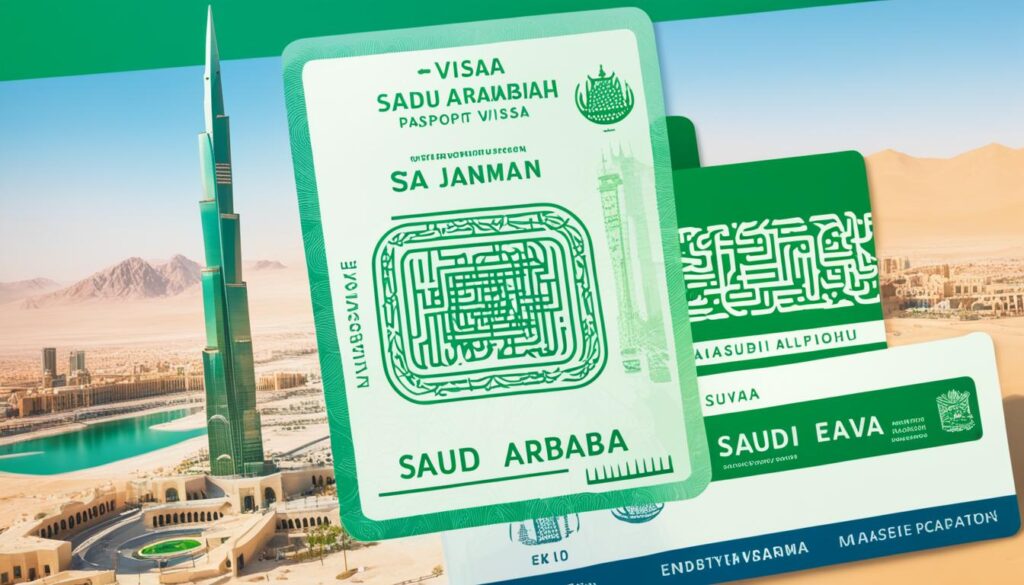
Decoding the visa application process reveals an emphasis on accessibility and convenience, encouraging travelers from across the globe to explore tourism in Saudi Arabia in 2023. The revolutionary e-visa has particularly eased the journey, allowing tourists to obtain travel authorization digitally, marking a pivotal turn in Saudi Arabian visa policies and enhancing the Kingdom’s hospitality offerings.
With a visa in just a few clicks, Saudi Arabia extends an invitation to the world, presenting an opportunity to encounter the country’s history, culture, and warm hospitality.
Further nurturing the landscape of travel, the Saudi Tourism Authority also focuses on unique experiences that embody authentic Arabian hospitality. Whether it’s luxury resorts or cultural festivals, each touchpoint is designed to leave an indelible mark of pleasurable and meaningful memories on international visitors.
- Rapid and efficient tourist visa application process
- Digital transformation with e-visa options
- Innovative hospitality offerings enhancing tourist experiences
The kingdom’s vision for tourism in Saudi Arabia in 2023 is not just about increasing numbers but about opening doors to cultural exchanges and mutual understanding, enabled through streamlined and welcoming visa policies. A visit to Saudi Arabia now promises to be a coveted item on every global traveler’s itinerary.
Conclusion
As we have seen throughout this exploration, the landscape of tourism in Saudi Arabia is undergoing an unprecedented transformation, shaped by visionary strategies and cultural renaissance. With the Kingdom’s gaze firmly set on the future, encapsulated by the visionary Saudi Arabia’s tourism plans to attract 100 million visitors by the year 2030, this ambitious leap heralds a new dawn for travel and tourism in the region. An era where the vast deserts, vibrant cities, and historical marvels of Saudi Arabia await the curious and adventurous spirit of global travelers.
The Future of Travel and Tourism in Saudi Arabia
The future shines bright for the Kingdom, illuminating potential and promise as it confidently strides towards a landmark of welcoming million visitors. Investments in infrastructure, preservation of heritage, and promotion of diversity in recreational opportunities are ushering in an age where Saudi Arabia is not only a crossing point for pilgrims but also a premier travel destination rich in experiences and adventures.
Why Saudi Arabia Should Be Your Next Travel Destination
For intrepid explorers and culture enthusiasts alike, the reasons to choose Saudi Arabia as your next destination are as vast as its deserts. From the Red Sea’s pristine waters to the historic wonders that span millennia, every nook of this storied land beckons with tales of the past and whispers of the future. The Kingdom’s evolving horizons offer a unique fusion of tradition and modernism, setting the stage for an unforgettable journey.
Engaging with the Local Saudi People and Culture
What truly defines a journey is often not just the landscapes or monuments, but the human connections made along the way. Engaging with the warm and gracious Saudi people offers an enriching experience that transcends beyond mere sightseeing. Their vibrant culture and hospitality open windows to a Saudi Arabia that tells a story of a nation proud of its roots, eager to share its growth and prosperity, and ready to write the next chapter with the world.
FAQ
What can travelers expect to experience in Saudi Arabia’s tourism sector?
Travelers can look forward to a rich blend of cultural heritage, breathtaking landscapes, and state-of-the-art developments. From exploring ancient archaeological wonders to enjoying modern amenities and participating in cultural festivals, Saudi Arabia offers a unique and transformative journey for every visitor.
How is Vision 2030 shaping the tourism landscape in Saudi Arabia?
Vision 2030 is a strategic framework aimed at diversifying Saudi Arabia’s economy, with a strong focus on the tourism sector. This ambitious plan involves creating new tourist attractions, improving infrastructure, and increasing international visitors, thereby positioning the Kingdom as a leading global tourism destination.
What are the UNESCO World Heritage sites that tourists can visit in Saudi Arabia?
Saudi Arabia is home to several UNESCO World Heritage sites, including the ancient Nabatean city of Al-Ula, At-Turaif District in Diriyah, the green sanctuary of Al-Ahsa Oasis, and the historic gateways of Jeddah. Each site offers a glimpse into the Kingdom’s rich history and culture.
What initiatives is Saudi Arabia taking to conserve the Red Sea’s natural beauty?
The Kingdom is undertaking significant conservation efforts, particularly with the Red Sea Project, which emphasizes ecotourism and sustainable development. This initiative aims to protect the Red Sea’s marine life and pristine environment while providing unique experiences for tourists.
How are cities like Riyadh and Jeddah contributing to Saudi Arabia’s hospitality scene?
Riyadh and Jeddah are at the forefront of the Kingdom’s hospitality scene, offering a fusion of entertainment, culture, and modern attractions. With events such as Riyadh Season and the developments in Neom and Amaala, these cities are setting new benchmarks in luxury and innovation in tourism.
What new amenities are expanding Saudi Arabia’s tourism industry?
The Kingdom is expanding its tourism amenities with cultural events such as the Red Sea International Film Festival, the development of historical sites like Diriyah, coastal retreats in the Eastern Province, and urban projects such as King Salman Park and Green Riyadh.
How do cultural festivals and events contribute to tourism in Saudi Arabia?
Cultural festivals and the ‘Saudi Seasons’ initiative showcase the Kingdom’s rich heritage and traditions. These events offer visitors an immersive experience into Saudi culture, promoting international cultural exchange and reinforcing the country as a tourist attraction.
What is the significance of Hajj and Umrah to Saudi Arabia’s tourism ecosystem?
The Hajj and Umrah pilgrimages are pivotal to Saudi Arabia’s tourism sector, drawing millions of religious tourists each year. This has a profound impact on the hospitality industry, stimulating economic growth and necessitating continuous improvements in infrastructure and services.
How has Saudi Arabia made it easier for international tourists to visit?
Saudi Arabia has introduced tourist visas and e-visa options to simplify entry for international visitors. The Saudi Tourism Authority plays a vital role by implementing strategies to enhance the Kingdom’s appeal as a hospitable and accessible tourism destination.
What does the future hold for tourism in Saudi Arabia?
The future of tourism in Saudi Arabia is very promising, with plans to attract 100 million visitors by 2030. The ongoing development of tourist attractions, infrastructure, and engagement with the local culture demonstrates the Kingdom’s potential to become a premier travel destination.


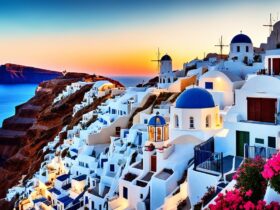
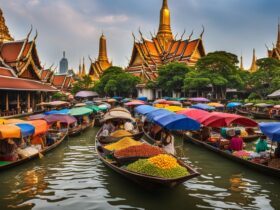
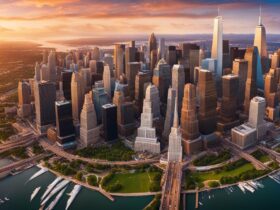
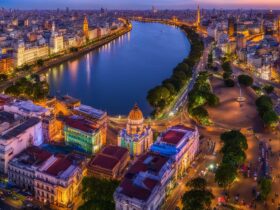
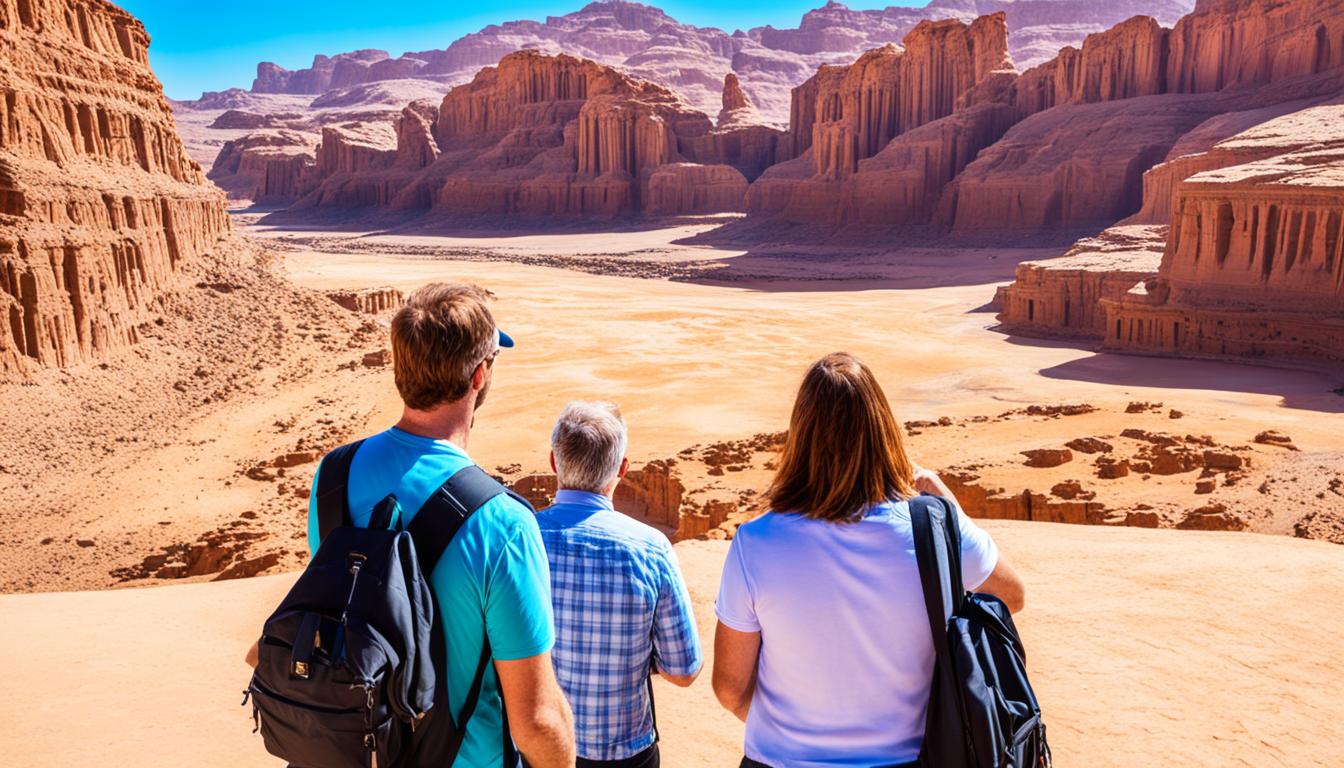


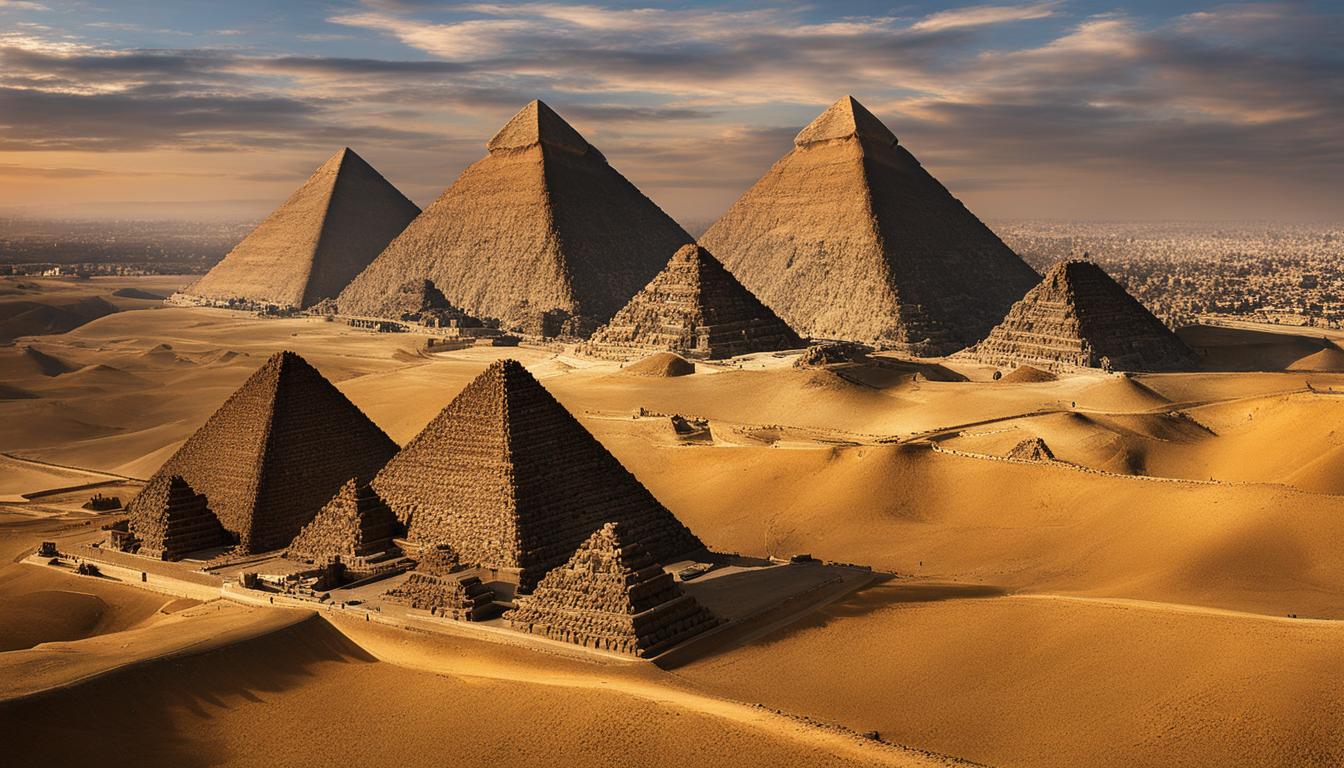
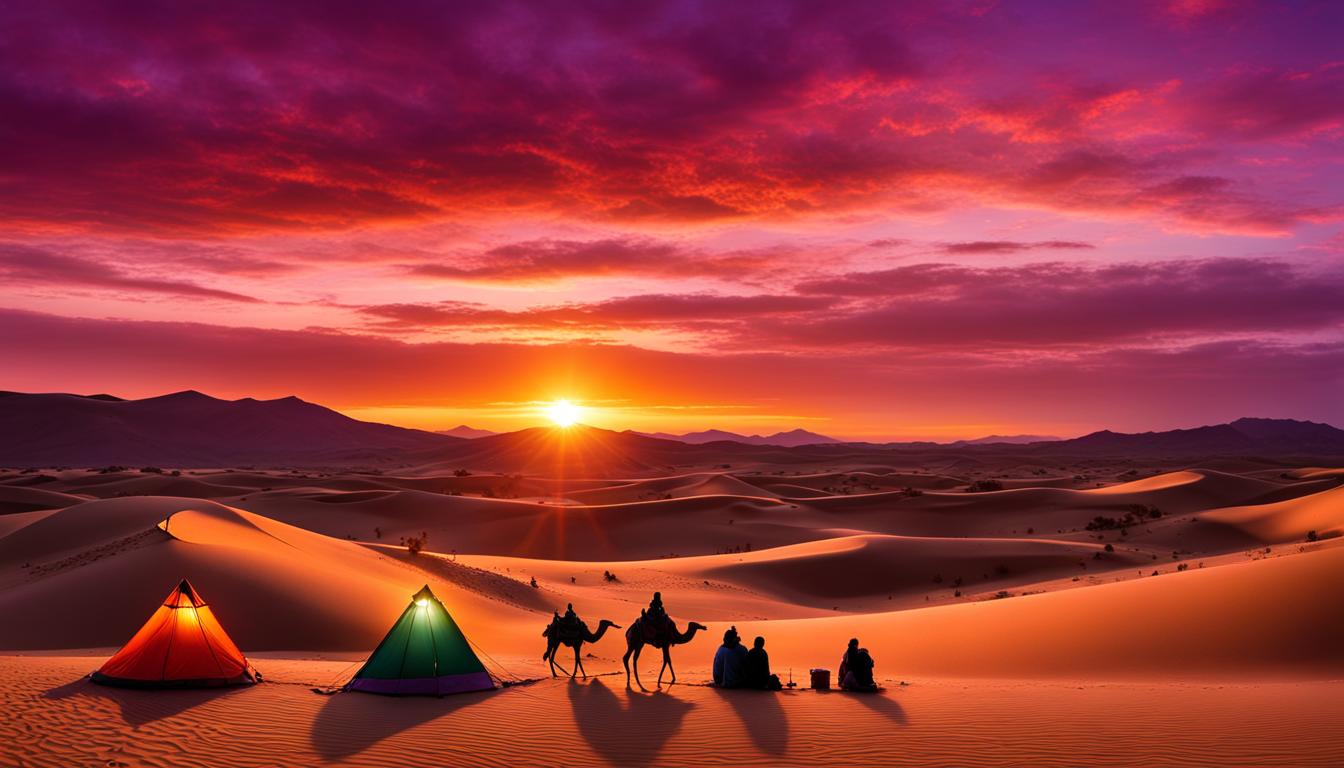

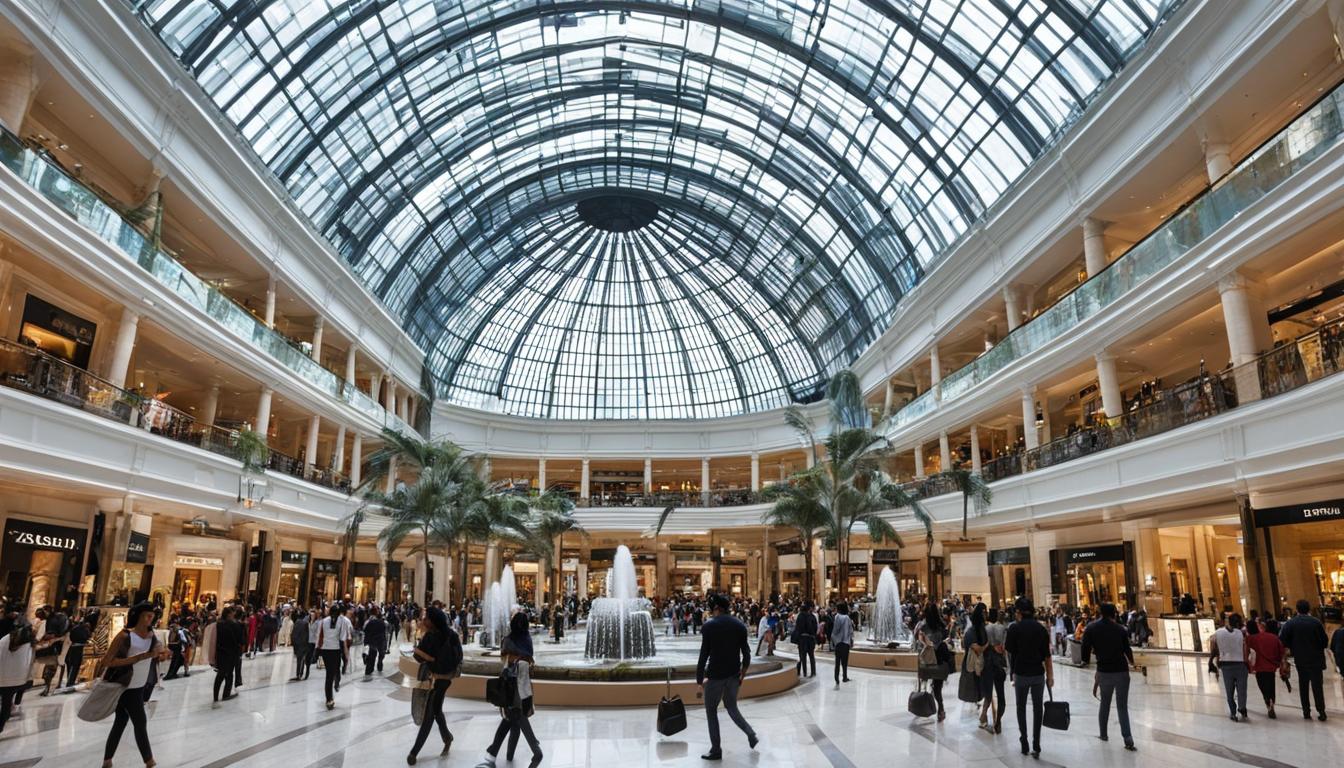
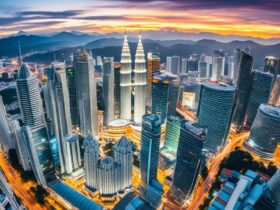
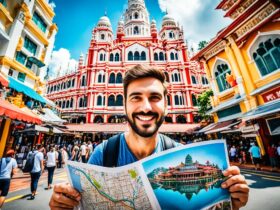
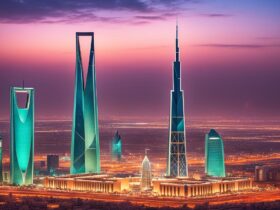
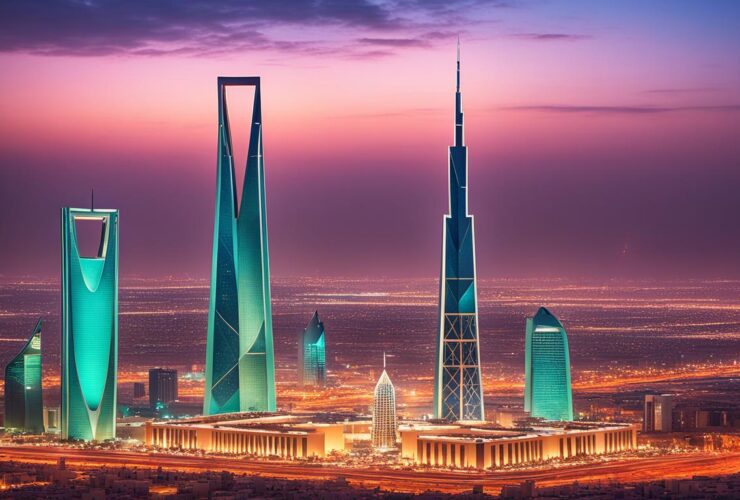
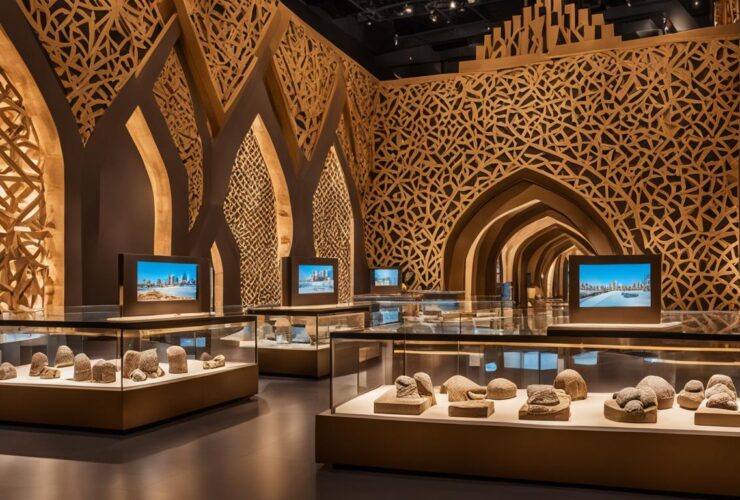
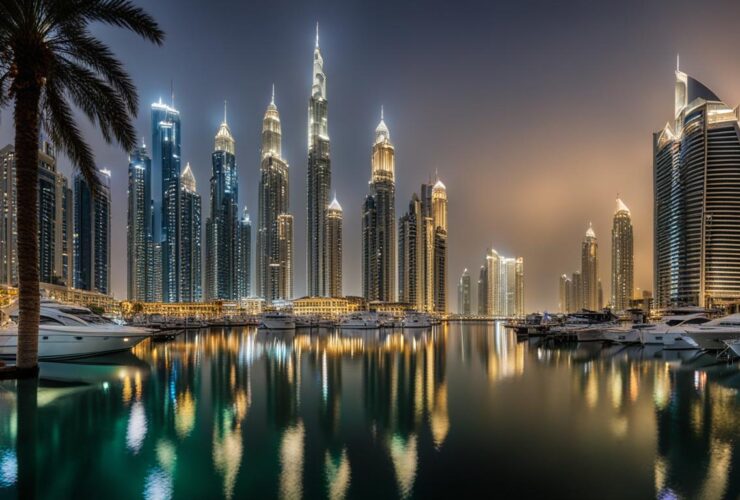
Leave a Reply
View Comments